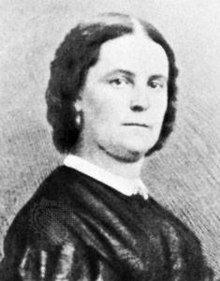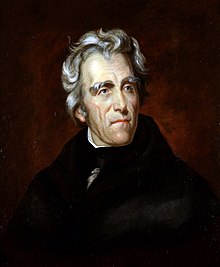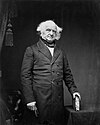
Andrew Jackson Jr was an American lawyer, planter, general, and statesman who served as the seventh president of the United States from 1829 to 1837. Before his presidency, he gained fame as a general in the U.S. Army and served in both houses of the U.S. Congress. Often praised as an advocate for ordinary Americans and for his work in preserving the union of states, Jackson has also been criticized for his racial policies, particularly his treatment of Native Americans.

Martin Van Buren was an American lawyer, diplomat, and statesman who served as the eighth president of the United States from 1837 to 1841. A primary founder of the Democratic Party, he served as New York's attorney general, U.S. senator, then briefly as the ninth governor of New York before joining Andrew Jackson's administration as the tenth United States secretary of state, minister to Great Britain, and ultimately the eighth vice president when named Jackson's running mate for the 1832 election. Van Buren won the presidency in 1836 against divided Whig opponents, the first president of non-Anglo-Saxon heritage and so far the only speaking English as a second language. Van Buren lost re-election in 1840, and failed to win the Democratic nomination in 1844. Later in his life, Van Buren emerged as an elder statesman and an important anti-slavery leader who led the Free Soil Party ticket in the 1848 presidential election.

John Caldwell Calhoun was an American statesman and political theorist who served as the seventh vice president of the United States from 1825 to 1832. Born in South Carolina, he adamantly defended American slavery and sought to protect the interests of white Southerners. Calhoun began his political career as a nationalist, modernizer and proponent of a strong federal government and protective tariffs. In the late 1820s, his views changed radically, and he became a leading proponent of states' rights, limited government, nullification, and opposition to high tariffs. Calhoun saw Northern acceptance of those policies as a condition of the South's remaining in the Union. His beliefs heavily influenced the South's secession from the Union in 1860 and 1861. He was the first of two vice presidents to resign from the position, the second being Spiro Agnew, who resigned in 1973.
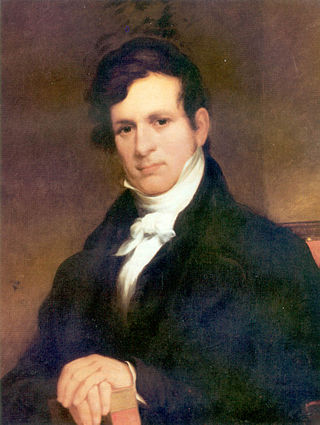
John Henry Eaton was an American politician and ambassador from Tennessee who served as U.S. Senator and as U.S. Secretary of War in the administration of Andrew Jackson. He was 28 years, 4 months, and 29 days old when he entered the Senate, making him the youngest U.S. Senator in history.

John Branch Jr. was an American politician who served as U.S. Senator, Secretary of the Navy, the 19th Governor of the state of North Carolina, and was the sixth and last territorial governor of Florida.

Rachel Jackson was the wife of Andrew Jackson, the seventh president of the United States. She lived with him at their home at the Hermitage, where she died just days after his election and before his inauguration in 1829—therefore she never served as first lady, a role assumed by her niece, Emily Donelson.
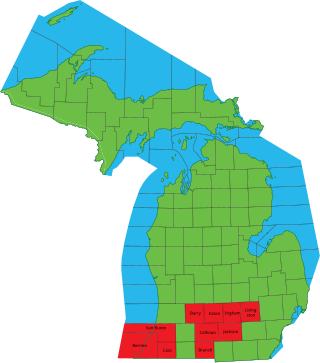
The Cabinet counties are ten counties in the southern part of the U.S. state of Michigan named after President Andrew Jackson and people who served in his Cabinet. The Michigan Territorial legislature created twelve counties in 1829, naming eight of them after members of the recently elected Jackson's cabinet. Cass County was also created in 1829 and named for Lewis Cass, the Territorial Governor at the time. Cass later served in Jackson's Cabinet, making a case for it to be included as a cabinet county. Livingston County was created in 1833 and named for Edward Livingston, Jackson's Secretary of State at the time.
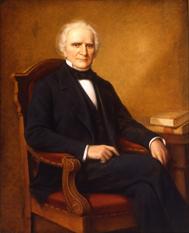
Samuel Delucenna Ingham was a state legislator, judge, U.S. Representative and served as U.S. Treasury Secretary under President Andrew Jackson.
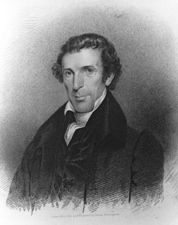
William Taylor Barry was an American statesman, jurist and slave owner. He served as Postmaster General for most of the administration of President Andrew Jackson and was the only Cabinet member not to resign in 1831 as a result of the Petticoat affair.
A Kitchen Cabinet is a group of unofficial or private advisers to a political leader. The term was originally used by political opponents of President of the United States Andrew Jackson to describe his ginger group, the collection of unofficial advisors he consulted in parallel to the United States Cabinet following his purge of the cabinet at the end of the Eaton affair and his break with Vice President John C. Calhoun in 1831.

The Gorgeous Hussy is a 1936 American period film directed by Clarence Brown, and starring Joan Crawford and Robert Taylor. The screenplay was written by Stephen Morehouse Avery and Ainsworth Morgan, which was based on a 1934 novel by Samuel Hopkins Adams. The supporting cast includes Lionel Barrymore and James Stewart.

Margaret Eaton, was the wife of John Henry Eaton, a United States senator from Tennessee and United States Secretary of War, and a confidant of Andrew Jackson. Their marriage was the cause of a national controversy known as the Petticoat affair. While better known in history as Peggy, Margaret stated in her autobiography, "I never was called Peggy in all my life...I was ordinarily called by my proper name of Margaret."
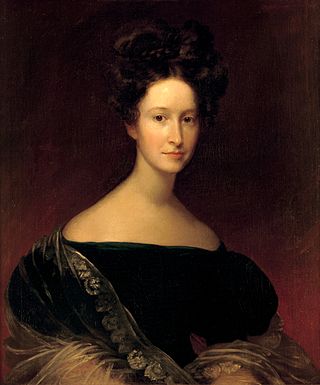
Emily Tennessee Donelson was the acting first lady of the United States from 1829 to 1834 during the presidency of her uncle Andrew Jackson. She was the daughter of the brother of Jackson’s wife. Jackson’s wife, Rachel Donelson Jackson, died weeks before her husband's presidential inauguration.

Floride Bonneau Calhoun was the wife of U.S. politician John C. Calhoun. She was known for her leading role in the Petticoat affair, which occurred during her husband's service as vice president of the United States. In that role, Mrs. Calhoun led the wives of other Cabinet members in ostracizing Peggy Eaton, the wife of Secretary of War John Eaton, whom they considered a woman of low morals. The affair helped damage relations between John C. Calhoun and President Andrew Jackson, and effectively ended any legitimate chance of John Calhoun becoming president of the United States.
John Bowie Timberlake was a protagonist in the American political scandal known as the Petticoat affair. His wife Margaret was rumored to have had an affair with John Eaton, who became Secretary of War in President Andrew Jackson's cabinet. The scandal brought about the resignation of most members of Jackson's cabinet.

The 1832 Democratic National Convention was held from May 21 to May 23, 1832, in Baltimore, Maryland. In the first presidential nominating convention ever held by the Democratic Party, incumbent President Andrew Jackson was nominated for a second term, while former Secretary of State Martin Van Buren was nominated for vice president.

The presidency of Andrew Jackson began on March 4, 1829, when Andrew Jackson was inaugurated as President of the United States, and ended on March 4, 1837. Jackson, the seventh United States president, took office after defeating incumbent President John Quincy Adams in the bitterly contested 1828 presidential election. During the 1828 presidential campaign, Jackson founded the political force that coalesced into the Democratic Party during Jackson's presidency. Jackson won re-election in 1832, defeating National Republican candidate Henry Clay by a wide margin. He was succeeded by his hand-picked successor, Vice President Martin Van Buren, after Van Buren won the 1836 presidential election.

The presidency of John Quincy Adams, began on March 4, 1825, when John Quincy Adams was inaugurated as President of the United States, and ended on March 4, 1829. Adams, the sixth United States president, took office following the 1824 presidential election, in which he and three other Democratic-Republicans—Henry Clay, William H. Crawford, and Andrew Jackson—sought the presidency. Adams was not a strong president, and he was under continuous attack from Jackson who easily defeated him in the 1828 presidential election.
William Berkeley Lewis was an influential friend and advisor to Andrew Jackson. He was born in Loudoun County, Virginia, and later moved near Nashville, Tennessee, in 1809. Major Lewis served as quartermaster under General Jackson. Later, in politics, he was a manager of Jackson and retained considerable influence until Jackson's second term as President of the United States. Jackson appointed Lewis as second auditor of the Treasury, a position he was able to retain until the Polk administration.
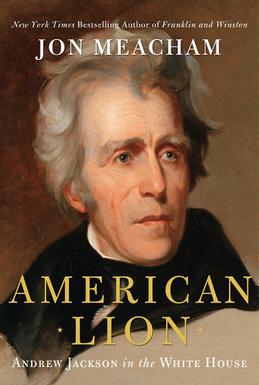
American Lion: Andrew Jackson in the White House is a 2008 biography of Andrew Jackson, the seventh President of the United States, written by Jon Meacham. It won the 2009 Pulitzer Prize for Biography, with the prize jury describing it as "an unflinching portrait of a not always admirable democrat but a pivotal president, written with an agile prose that brings the Jackson saga to life".

